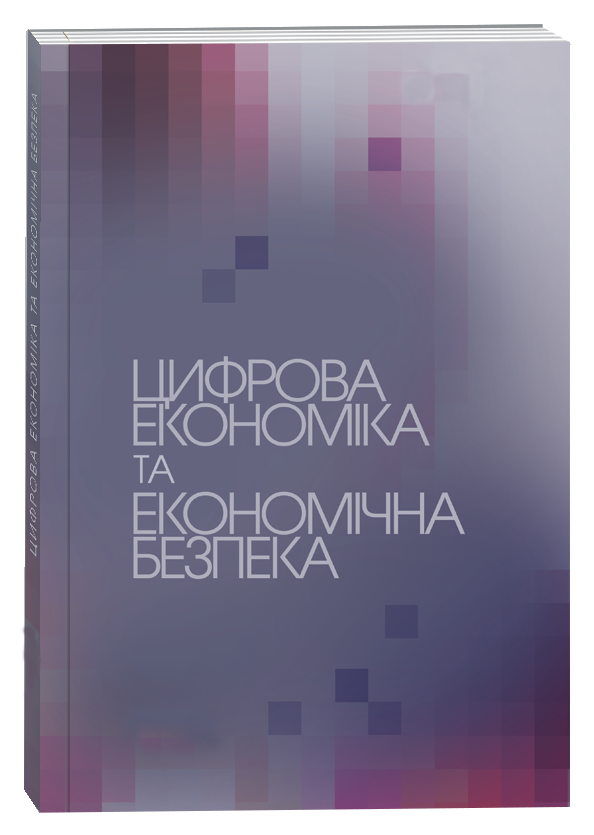ART & TECH AS AN INVESTMENT IN INTANGIBLE ASSETS: AESTHETIC TECHNOLOGIES IN MARKETING AND CORPORATE CULTURE
Abstract
In the context of digital transformation, when technologies are becoming increasingly accessible and rapidly changing, investments in intangible assets related to art and technology (Art & Tech) are gaining special importance and require in-depth research. The purpose of the article is to consider Art & Tech interventions as a tool for forming a company's intangible assets, in particular, attention, customer loyalty, emotional involvement and a sustainable corporate environment. Research methods: to achieve the goal, the following research methods are used: analysis of scientific literature, synthesis, formalization of scientific sources, description, comparison, theoretical generalization of the experience of Collab studio. The example of luxury marketing, office space architecture and digital well-being illustrates the impact of Art & Tech on the return on investment, where each invested dollar generates profit either through increased reach and influx of customers, or through increased internal efficiency. Art & Tech is considered not as an image strategy, but as a practical technology for forming the cultural and emotional value of a company. Discussing competitive scenarios for the development of the Art & Tech market and their impact on the economy allows companies and investors to better understand the prospects of this area of activity and develop strategies for adapting to new conditions. Intangible investments (Art & Tech) lead to financial growth through the marketing effect. It also causes positive changes in the working environment and team performance. All this, although it does not have a direct commercial equivalent, affects the attraction, retention and efficiency of employees, which translates into financial benefits for the company (through savings on personnel, improved work quality, reduced sick leave). Thus, the practical value of the study lies in substantiating the emergence of a new ROI (return on investment) model at the junction of art, technology and intangible assets, where profit is measured not only in money, but also in the impact on brand value, loyalty, staff efficiency and emotional capital of the company. And although these investments do not always have an instant result, their long-term effect often exceeds traditional marketing or infrastructure costs.
References
Український національний офіс інтелектуальної власності та інновацій (УКРНОІВІ). URL: https://nipo.gov.ua/world-intangible-investment-highlights/
Adi S., Setyawan R., Sumarlin T. The Influence of Digital Marketing Strategies on Brand Loyalty: A Cross-Cultural Study Using A/B Testing. Journal of Management and Informatics. 2024. № 3(3). Рр. 414–433. DOI: https://doi.org/10.51903/jmi.v3i3.51
Bojana K., Milicab J., Ivanab J. The importance of reputation as intellectual assets for competitiveness of companies. Naučne publikacije Državnog univerziteta u Novom Pazaru. Serija B, Društvene & humanističke nauke. – Scientific publications of the State University of Novi Pazar. Series B, Social Sciences & Humanities. 2021. Vol. 4. Iss. 1. Рр. 17–28. DOI: https://doi.org/10.5937/NPDUNP2101017K
Butnaru A. Theoretical Background on Valuation Methods of Intangible Assets in Listed and Unlisted Companies: A bibliometric analysis from 2010-2024. IBIMA Publishing Communications of International Proceedings. 2024. Vol. (9), Article ID 4442024. URL: https://ibimapublishing.com/p-articles/44MGT/2024/4442024/
Kumar V., Ashraf A. R., Nadeem W. AI-Powered Marketing: What, Where, and How? International Journal of Information Management. 2024. № 7. Р. 102783. DOI: https://doi.org/10.1016/j.ijinfomgt.2024.102783
Mais A. Al-Sharqi, Haitham S. H. Exploring the Reality behind Augmented Reality Applications in Retailing: The Role of Value Orientation and Use Frequency. Recent Advances in Computer Science and Communications. 2025. Volume 18. Issue 2. DOI: https://doi.org/10.2174/0126662558301412240527070708
Williams M., Biggemann S. Corporate Art Collections in Australia: The Influence of Aboriginal Art on Corporate Identity. International Journal of Business Communication. 2020. № 60(2). РР. 656–677. DOI: https://doi.org/10.1177/2329488420958112
Zhang Y. Research on Marketing Strategies and Business Operation Models of Commercial Brands on Social Media Platforms: A Case Study of Instagram. Journal of Education, Humanities and Social Sciences. 2024. № 27. Рр. 378–383. DOI: https://doi.org/10.54097/k35h6h54
Ukrainskyi natsionalnyi ofis intelektualnoi vlasnosti ta innovatsii (UKRNOIVI) [Ukrainian National Office of Intellectual Property and Innovation (UKRNOIVI)]. Available at: https://nipo.gov.ua/world-intangible-investment-highlights/
Adi S., Setyawan R., Sumarlin T. (2024). The Influence of Digital Marketing Strategies on Brand Loyalty: A Cross-Cultural Study Using A/B Testing. Journal of Management and Informatics, no. 3(3), рр. 414–433. DOI: https://doi.org/10.51903/jmi.v3i3.51
Bojana K., Milicab J., Ivanab J. (2021) The importance of reputation as intellectual assets for competitiveness of companies. Naučne publikacije Državnog univerziteta u Novom Pazaru. Serija B, Društvene & humanističke nauke. – Scientific publications of the State University of Novi Pazar. Series B, Social Sciences & Humanities, vol. 4, iss. 1, рр. 17–28. DOI: https://doi.org/10.5937/NPDUNP2101017K
Butnaru A. (2024). Theoretical Background on Valuation Methods of Intangible Assets in Listed and Unlisted Companies: A bibliometric analysis from 2010-2024. IBIMA Publishing Communications of International Proceedings. Vol. (9), Article ID 4442024. Available at: https://ibimapublishing.com/p-articles/44MGT/2024/4442024/
Kumar V., Ashraf A. R., Nadeem W. (2024). AI-Powered Marketing: What, Where, and How? International Journal of Information Management, no. 77, p. 102783. DOI: https://doi.org/10.1016/j.ijinfomgt.2024.102783
Mais A. Al-Sharqi, Haitham S. H. (2025). Exploring the Reality behind Augmented Reality Applications in Retailing: The Role of Value Orientation and Use Frequency. Recent Advances in Computer Science and Communications, vol. 18, issue 2. DOI: https://doi.org/10.2174/0126662558301412240527070708
Williams M., Biggemann S. (2020). Corporate Art Collections in Australia: The Influence of Aboriginal Art on Corporate Identity. International Journal of Business Communication, no. 60(2), pp. 656–677. DOI: https://doi.org/10.1177/2329488420958112
Zhang Y. (2024). Research on Marketing Strategies and Business Operation Models of Commercial Brands on Social Media Platforms: A Case Study of Instagram. Journal of Education, Humanities and Social Sciences, vol. 27, pp. 378–383. DOI: https://doi.org/10.54097/k35h6h54
